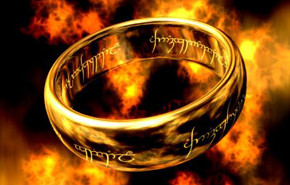 |
| Pierre-Simon de Laplace and Antoine-Laurent de Lavoisier thought that heat was an invisible liquid. |
18th century physicists thought of heat as something much like electricity: an invisible fluid that could flow through other materials or soak into them. They named this hypothetical fluid ‘caloric,’ and it was thought to be a distinct form of material, like air or water, only different. If an object had absorbed a lot of caloric, like a sponge soaking up water, then it was hot. If the caloric drained out, the object cooled.
This was a sensible theory. We all know that objects can become electrically charged and that this changes their properties. A charged balloon can stick to the ceiling, or make your hair stand on end; a charged metal sphere can give you a zap. Electric current really is an invisible fluid, composed (most usually) of material particles called electrons. Most of the time they are bound up in atoms, but when they come loose they can flow into things, or out of them or through them. Things can become charged by soaking up extra electrons.
This was a sensible theory. We all know that objects can become electrically charged and that this changes their properties. A charged balloon can stick to the ceiling, or make your hair stand on end; a charged metal sphere can give you a zap. Electric current really is an invisible fluid, composed (most usually) of material particles called electrons. Most of the time they are bound up in atoms, but when they come loose they can flow into things, or out of them or through them. Things can become charged by soaking up extra electrons.
 |
| Soaking up electric charge. (Image by Wikimedia user Dtjrh2, used under Creative Commons license.) |
So in the eighteenth century it only made sense to think of heat as something similar to electrical charge. In the following century, heat engines and electric motors would be developed in parallel, and engineers would still think of them in similar terms. Today again people are deciding whether to have a car powered by an electric motor instead of a combustion engine, and the differences seem to be ones of practical detail.
Today we no longer believe that heat is a material fluid, however. Why not? It's not really as clear-cut an issue as textbooks often make it seem, because today our concept of matter is not as simple as it once was. We know that not even electrons are really these indestructible little specks of hard stuff: they can be created and destroyed in high-energy collisions. And in a lot of ways we still treat heat as if it were a material fluid.
The bottom line, though, is that even though electrons can be born and die, electric charge can't. If electrons appear or disappear they do so together with positrons, so that the net change in charge remains zero. The only way for an object to become charged is for charge to flow into it from elsewhere—or for opposite charge to flow out of the object. There is no way to simply create charge from stuff that is not charge. Heat, in contrast, can flow into or out of things—but that's not the only way to get heat. One can also create heat, without importing it or already having it. It's called friction.
Rub your hands together. Feel it? That's heat.
You didn't just create any new material substance from nothing. Big Bangs and particle colliders aren't as easy as that. So heat is not a material fluid. What is it, then?
Whatever heat is, you've just made some. It's right there in your hands.
Today we no longer believe that heat is a material fluid, however. Why not? It's not really as clear-cut an issue as textbooks often make it seem, because today our concept of matter is not as simple as it once was. We know that not even electrons are really these indestructible little specks of hard stuff: they can be created and destroyed in high-energy collisions. And in a lot of ways we still treat heat as if it were a material fluid.
The bottom line, though, is that even though electrons can be born and die, electric charge can't. If electrons appear or disappear they do so together with positrons, so that the net change in charge remains zero. The only way for an object to become charged is for charge to flow into it from elsewhere—or for opposite charge to flow out of the object. There is no way to simply create charge from stuff that is not charge. Heat, in contrast, can flow into or out of things—but that's not the only way to get heat. One can also create heat, without importing it or already having it. It's called friction.
Rub your hands together. Feel it? That's heat.
You didn't just create any new material substance from nothing. Big Bangs and particle colliders aren't as easy as that. So heat is not a material fluid. What is it, then?
Whatever heat is, you've just made some. It's right there in your hands.





